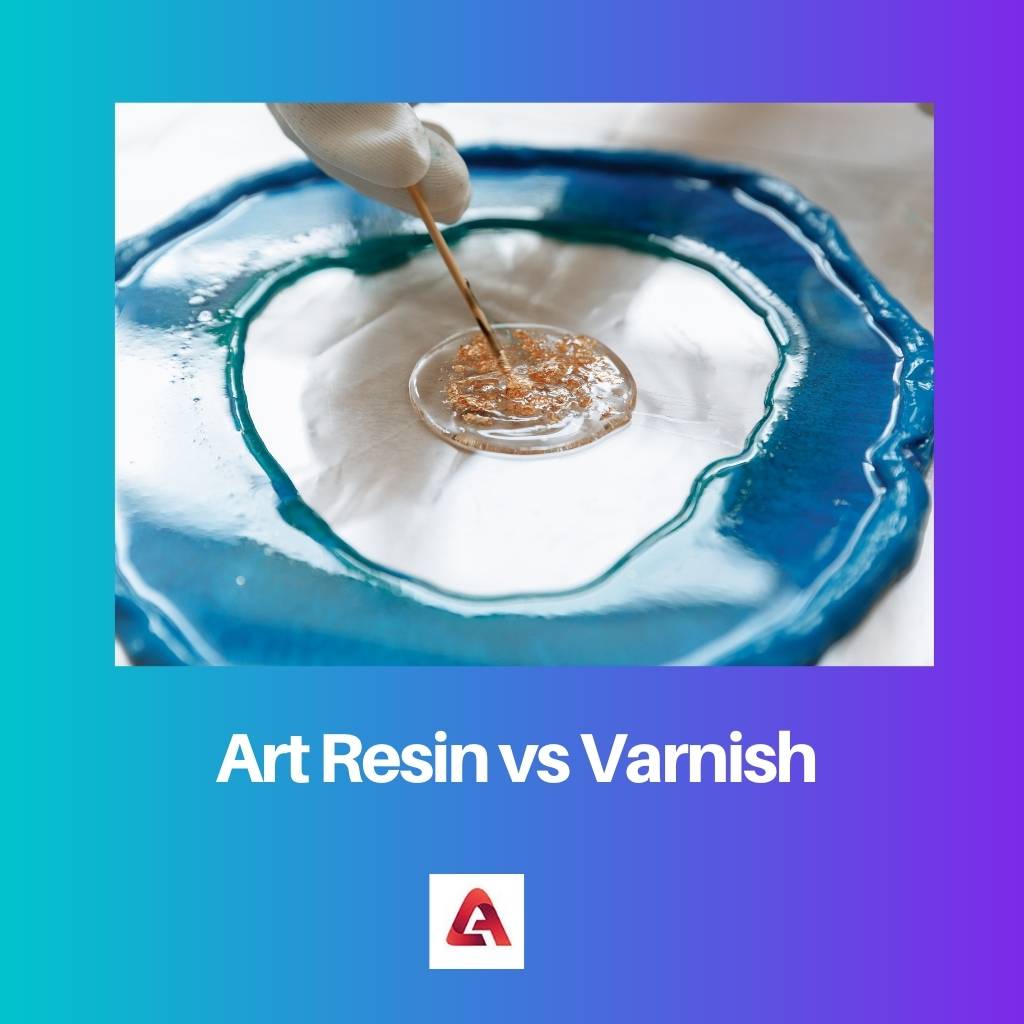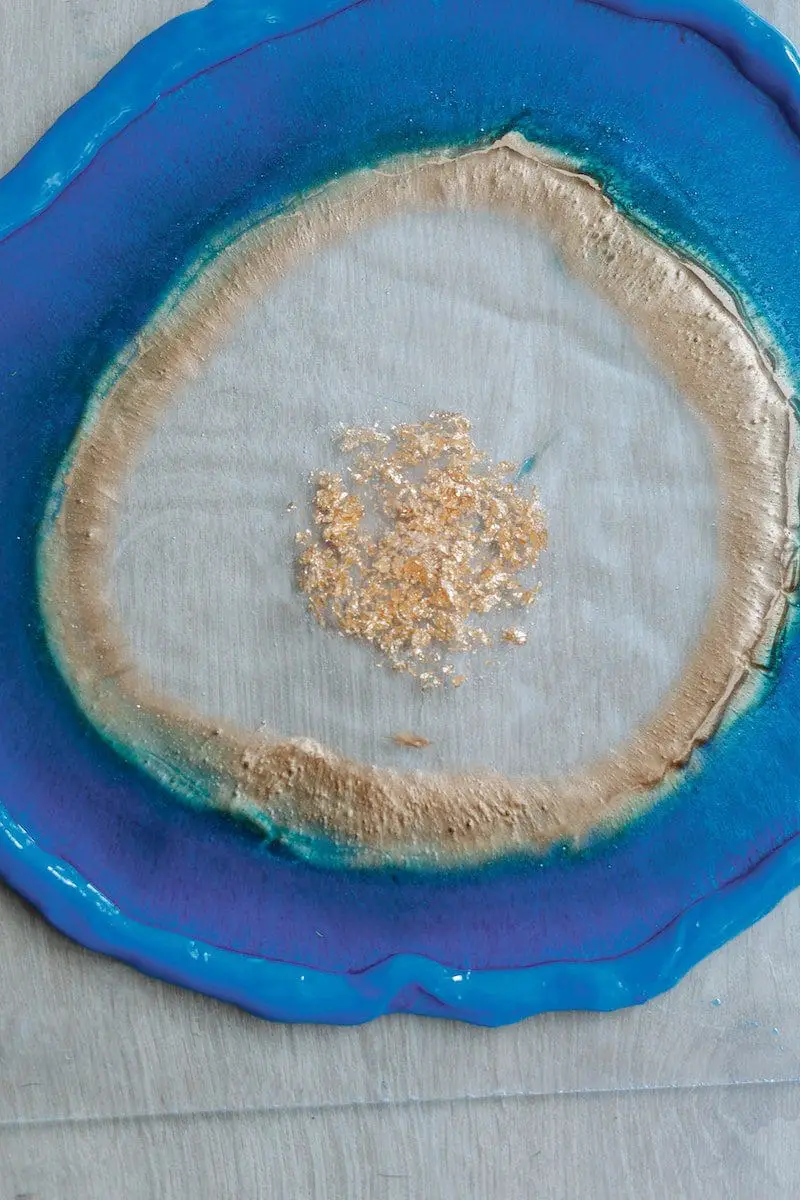Both wood treatments protect the wood against various variables, including humidity, bacteria, and age, since a protective coating protects the wood. They are now two of the most popular finishes on the market.
Well, the use and protective features of varnish and art resins have become popular. These two are essential in art, paintings, structure, distinctive surfaces, etc.
There are several epoxy resins on the market, but they are two of them with a particular place in the arts and construction sector. But they are not the same since their qualities are different.
Key Takeaways
- Art resin is a type of epoxy resin used to seal and protect artwork, while the varnish is a clear, protective coating applied to wood surfaces.
- Art resin is self-levelling and produces a high-gloss finish, while varnish can be either matte or glossy and may require multiple coats to achieve the desired level of protection.
- Art resin is used for three-dimensional artwork or artwork with a lot of texture, while the varnish is commonly used on flat surfaces such as furniture or floors.
Art Resin vs Varnish
The difference between Art Resin and Varnish is that, First of all, art resin is employed in the artworks by priority for creative demands. Art Resin is used mostly for coating purposes. Art resin has conquered certain properties, such as avoiding yellowing which is an advantage of other synthetic resins. The varnish contains some solvents and resins. Varnish is used whenever necessary. The resin is made of plants with varnish.

Art resin has several significant advantages and is a complete liquid solution. Art resin is just for you for DIY applications.
Art resin is a solution of epoxy resin with advantages such as transparency, the absolute prevention of UV radiation, and the nature of your craft. Art Resin is a non-toxic and less harsh synthetic resin.
It is designed for creative or artistic use by any artist. It is easy to use because of the two components, one resin which is applied in a ratio of 1:1. It provides a transparent and brilliant result.
Varnish is a combination of a few types of solvents of resin and oil. It is ultraviolet-resistant. It is used for wood finishing outdoors. It is made in the garden or on the decks. Softwoods are commonly used. It may crack or peel.
It is sensitive. It’s not poisonous. Varnish consists of some sort of solvent composed of resin and oil. The finish is natural. It is used to protect the surface from UV rays in the outdoor finish.
Due to water, it will not be damaged. Varnish has several solid components, which are particularly good under adverse weather conditions.
Comparison Table
| Parameters of Comparison | Art Resin | Varnish |
|---|---|---|
| Meaning | Art resin is a solution of epoxy resin with advantages such as transparency, the absolute prevention of UV radiation, and the nature of your craft. | Varnish is a combination of a few types of solvents of resin and oil. It is ultraviolet resistant. |
| Sustainability | It keeps the output from yellowing. | Varnish will probably become yellow. |
| Pricing | The most expensive art resins are art resins. | Varnish is less expensive than art resin. |
| Texture | Hard | Soft |
| Use | It is for indoors. | It is for the outdoors. |
What is Art Resin?
Well, various reasons exist for protecting things from alien substances and how. The elements are unavoidable to prevent them, and it is vital to safeguard them. Epoxy serves as a defence to ensure that elements are not fine.
For this purpose, art resins can be found on the market at affordable prices, which ensures that you do not work in vain. These artificial resins are known to protect against two main difficulties.
The first is protection against radiation from the sun or elsewhere from UV material.
And the second may be hazardous and human health care. Well, art resins ensure that the paintings remain clear and long-term crystal. Paintings are hazy and blurred, losing their gloss and lustre in time.
But Resin may ensure that beauty doesn’t fade so quickly by the pure and quality solution of art. These are tested before being installed on the market. A thick solution is art resin.
As it progressively flows on the surface, the viscosity is low.
Moreover, art resin includes or is lightly stabilizing to ensure that it doesn’t become lost, even in ordinary light or bulb lights. However, HALS slows yellowing before the process, making such solutions the most suitable for use.
Art resin is a novel synthetic resin creation that has produced several normal synthetic resin gaps. There is no volatile organic component in it, which is noxious, which makes it unsafe.
Adding pigments or any tinting in Art Resin can generate a tinted epoxy, or it is also possible to add the Art resin pigments produced for the production of a tinted epoxy by the brand itself.
It also has a highly advanced HALS ingredient besides UV stabilizers. Before it begins, HALS helps to stop the yellowing process. It utilizes high-quality material to ensure a long time of clarity of the product.

What is Varnish?
The lacquer is a transparent sort of lacquer. It’s not painted or stained. The original color of the varnish is not in itself but maybe discolored for specific times owing to commercial goals.
It is used mostly to seal finished wood. Usually, it has a brilliant finish. However, semi-gloss variants are provided. Varnish does not refer to a specific composition or formula of the chemical.
The combination of resin pine sap initially generated the varnish. It was a technology from Egypt.
The lacquer is highly flammable. Hence adequate storage and disposal precautions must be adopted. In the varnish, plant-derived oils are flame retardants.
A combination of drying oil, resin, and a thinner or solvent is traditionally used for coating. In contrast, different varieties of lacquers consist of distinct components.
Different elements like heat and moisture play a key influence in varnishes’ drying and curing process.
The time requirements for the treatment of the varnish also depend partially on the type of oil and the ratio of the oil to the resin present that has been utilized.
The lacquer covers diverse sources of energy, such as sunshine, UV radiation, and heat during drying and curing. It is applied on beaches, and the seat looks brilliant with garden varnish.
In contrast to art resin, their toxicity is quite minimal. It’s quite flexible.
Due to its excellent durability, the varnish is mainly used on softwoods. Varnish is quite thin since it is applied to the purpose in several coats. The surface could not readily be left.
Available in different coats, it takes time to dry and can take up to 6 hours to dry. It is applied with a brush and is not as expensive as art resin. It’s an old wood finishing material.

Main Differences Between Art Resin and Varnish
- Art resin is used for artistic coating and can be used in casting relatively tiny items like pen whites, whereas varnish is used for coating and casting.
- The blending ratio is 1:1, i.e., one portion of the art resin is supplied with 1 portion of the harder, whereas varnish has the blending proportion of the lacquer is 2:1 and 1; that means 1 portion of the resin supplied with 1 part of the hardener.
- The components in art resin contribute to the prevention of yellowing of the result, whereas varnish has a coating that delays yellowing but does not prevent it altogether.
- Art resin is more costly than all other epoxy resins on the market, whereas varnish is relatively less expensive than Art resin.
- The art resin is limited to the arts, whereas the varnish covers all surfaces, including paintings.

- https://pubs.geoscienceworld.org/gsabulletin/article-lookup/69/5/487
- https://pubs.acs.org/doi/pdf/10.1021/ac00196a003

Art resin and varnish have distinct features that cater to specific needs such as texture, finish, and application environments.
Absolutely, Wclark. Understanding these differences is crucial for selecting the most suitable protective coating for different types of projects.
I appreciate the comparison table included. It provides a concise overview of the key differences between art resin and varnish, aiding in making informed decisions based on specific requirements.
Indeed, the comparison table simplifies the decision-making process and allows for a more nuanced understanding of the unique attributes of each protective finish.
Well said, Graham. Having a clear understanding of the distinctions between art resin and varnish is essential for utilizing them effectively in various artistic or construction applications.
The insights provided into the unique properties and application environments of art resin and varnish enable creators to make informed decisions when choosing the most suitable protective coating for their artistic and construction endeavors.
Precisely, Hall. This comprehensive understanding of the distinctive features of art resin and varnish facilitates the informed selection of the most compatible protective solution tailored to specific artistic and construction projects.
I fully agree, Hall. The detailed information on art resin and varnish aids creators in making well-informed choices for preserving the integrity and visual appeal of their artworks and constructions.
The comprehensive description of art resin and varnish functions and qualities is enlightening, particularly regarding the differences in sustainability, pricing, and texture.
I couldn’t agree more, Paula. The information presented provides valuable insights into the unique properties of art resin and varnish, aiding in selecting the most appropriate option for various artistic ventures.
Absolutely, Paula. This detailed breakdown helps in distinguishing between the two protective coatings and their respective suitability for different projects.
Art resin’s ability to maintain the clarity and longevity of paintings, particularly through UV radiation prevention, makes it a valuable protective solution for artists, ensuring the preservation of their creations.
Well articulated, Jim. The protective qualities of art resin offer artists the assurance that their works are shielded from environmental harm, preserving their aesthetic appeal over time.
The protective benefits of art resin against UV radiation and the aspects of varnish suited for outdoor use offer valuable insights into the distinct functions of these protective coatings.
Well expressed, Dsaunders. Understanding the specific protective advantages of art resin and varnish enables creators to make well-informed choices based on their artistic or construction requirements.
The ability of art resin to maintain the clarity and longevity of paintings, especially through its UV radiation prevention, is a significant advantage, making it a valuable protective solution for artists.
Well stated, Adams. The protective qualities of art resin offer artists peace of mind, knowing that their creations are safeguarded against environmental and visual degradation.
The distinctive features of art resin and varnish, including their application environments and textural differences, provide insights into selecting the most suitable protective coating for indoor and outdoor uses.
I completely agree, Stephen. Understanding these differences is essential for choosing the appropriate protective solution that meets the specific needs of each artistic or construction project.
Absolutely, Stephen. The information provided sheds light on the unique properties of art resin and varnish, guiding creators and artisans in effectively preserving the integrity of their works through informed decisions.
In addition to protecting against humidity, bacteria, and age, art resin also provides UV radiation prevention and can improve the longevity and quality of paintings and artwork.
That’s an excellent point, Chapman. Art resin truly serves as a protective layer, preserving the beauty of artwork for years to come.
The detailed comparison of art resin and varnish properties, including their sustainability, pricing, and texture, provides a comprehensive understanding of their unique advantages and suitability for various applications.
Exactly, Xhughes. This comprehensive comparison allows for an in-depth analysis of the protective properties of art resin and varnish, facilitating the selection of the most compatible option for diverse artistic and construction projects.
I couldn’t agree more, Xhughes. Understanding the specific attributes of art resin and varnish helps in effectively utilizing these protective coatings in various artistic and construction contexts.